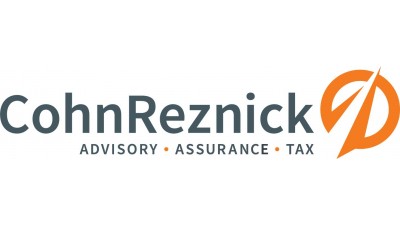Transit May Be The Least Important Piece Of Transit-Oriented Development

The idea is simple enough: build public transit from downtown to an underused part of a city, and developers and commuters should flock around the stations. A quick commute by train, light rail or bus should mean new homes, businesses and jobs. However, public transit may not be the most important factor to making a successful transit-oriented development.
Research, planning and — above all — government cooperation are the keys to successful TODs. Having efficient transit to a downtown is not enough to recommend an area to commuters or to developers. To profit from a TOD, developers need to cooperate with local authorities.
“Improving transit is a great way to revitalize a city, but it’s not just a question of ‘if you build it, they will come,’” CohnReznick Managing Partner Jason Burian said. “There are many barriers to building a good TOD. You have zoning concerns, investment concerns, tax concerns, and without local help, the new neighborhood probably won’t happen.”
“Transit” is right there in the name; it seems like transportation should form the backbone of a transit-oriented development. Yet, a study of TOD projects across the U.S. from the Institute for Transportation & Development Policy shows that investment in the transit system itself is not strongly correlated with return on investment in terms of new residents and businesses in TODs.
What is strongly correlated with TOD success is government intervention. That is because most of the barriers to TOD development take the form of local regulations.
“Developers are excited about TODs, but they’re heading into bureaucracies that they may not be used to,” Burian said. “Cities have zoning restrictions that might stop the kind of walkable, mixed-use development that TODs need. Cities may own much of the property around the transit station itself, so how they lease or allocate that land will make or break the TOD.”
Local authorities can help promote the growth of TODs by rezoning the areas around transit hubs. They can also offer incentives to attract developers, like Tax Increment Financing, which reimburses property taxes on new projects, or offer low-interest loans to developers to help them finance new projects.
To make a TOD appealing, developers cannot just rely on buildings; they again need local help. Cities that are involved in the planning of TODs are more likely to invest in capital improvements — things like buried power lines, bike lanes and park benches — that can make TODs more attractive to new residents, Burian said.
“TOD developers are tapping into a younger generation’s wish to live, work and play, all without owning a car,” Burian said. “So these have to be 24-hour neighborhoods. They need green spaces, sidewalks, lighting and safety infrastructure that make people want to spend time here. Only the city can really make those changes.”

If the goal is economic growth, transit can almost be an afterthought. Burian noted that massive TOD projects like Lincoln Yards in Chicago are taking a reverse approach — rather than expanding out from an existing transit line, the city and developers are building residences and parks first, then adding a light rail line later.
Local authorities and developers should both be excited about TODs. For governments, TODs can reduce congestion and pollution by taking commuters out of cars and putting them in buses and trains. They can also bring new residents, businesses and tax revenue to industrial or vacant areas near city centers.
For developers, TODs offer a way to tap into a growing market of young professionals without cars and to build a new neighborhood from scratch. The returns can be staggering. It is estimated that building the same development near a transit center can increase returns by 150%. Burian said developers should be able to find sites for TODs that fall within qualified opportunity zones, as economically distressed areas often have the land available for these types of developments.
“There is a fine line to be walked between new developments and building an authentic neighborhood,” Burian said. “No one wants to feel like they live somewhere that got invented in a boardroom.”
But, to a certain extent, even charm can be devised. Burian said that investing in theaters and restaurants and public infrastructure like walking and biking paths can make TODs unique places to live. Cities can also work with many developers in building a TOD to ensure diversity of offerings.
“The goal is to make the TOD a destination in itself,” Burian said. “You don’t want people living there solely because it’s an easy commute. People who live elsewhere should want to come out and visit.”
This feature was produced in collaboration between Bisnow Branded Content and CohnReznick. Bisnow news staff was not involved in the production of this content.

